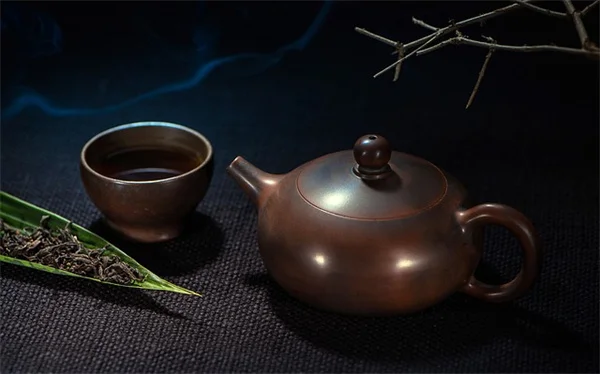Jamie Foxx's Brain Bleeding Scare: What Really Happened & How He Survived
Did Jamie Foxx really suffer from brain bleeding? The answer is absolutely yes - and his story could save your life one day. In his new Netflix special 'What Had Happened Was', the 56-year-old superstar finally opened up about his terrifying hemorrhagic stroke in April 2023. I've been following medical stories like this for years, and let me tell you - Jamie's experience is both shocking and incredibly educational.Here's what you need to know right now: that bad headache Jamie described? It was actually brain bleeding that made him lose consciousness for 20 days. What's crazy is how easily doctors can miss these symptoms - his first ER visit got him sent home! But thanks to his sister's persistence (and some divine intervention, as Jamie would say), he got the life-saving treatment he needed. We'll break down exactly what happened, why it matters to you, and how to spot these warning signs before it's too late.
E.g. :CDC Vaccine Updates 2025: What's Changing for COVID, RSV & HPV?
Advertisement
- 1、Jamie Foxx's Terrifying Medical Emergency
- 2、The Shocking Truth About Hemorrhagic Strokes
- 3、How Jamie Beat the Odds
- 4、The Silver Lining in Jamie's Story
- 5、The Hidden Dangers We All Face
- 6、Modern Medicine's Breakthroughs
- 7、Beyond the Physical Recovery
- 8、Your Personal Safety Net
- 9、FAQs
Jamie Foxx's Terrifying Medical Emergency
The Day Everything Changed
Picture this: You're Jamie Foxx on April 11, 2023. You've got a headache that feels like a jackhammer in your skull. You ask your buddy for aspirin, but suddenly - bam! - the world goes black. That's exactly what happened to our favorite actor/comedian.
Now let me tell you something scary - Jamie didn't remember anything for 20 whole days after that moment. His sister knew something was seriously wrong when the first doctor sent them home saying it was "nothing serious." But here's the kicker - it was actually brain bleeding, medically called hemorrhagic stroke. And guess what? This condition accounts for only 13% of all strokes, making it pretty rare compared to the more common ischemic strokes.
Why Doctors Initially Missed the Signs
Ever wonder how something so serious could be missed? Well, here's the deal - headaches alone don't automatically mean stroke. There are about a million reasons someone might have a headache (including that terrible joke I just told).
Dr. Kendrick Johnson from Tulane University explains it perfectly: "When a young, healthy guy like Jamie comes in with just a headache and no other obvious symptoms, stroke isn't usually the first thing we think of." But here's what we all need to remember - any sudden, severe headache could be a red flag for brain bleeding, especially if it's "the worst headache of your life" (which is exactly how Jamie described his).
The Shocking Truth About Hemorrhagic Strokes
 Photos provided by pixabay
Photos provided by pixabay
More Than Just a Bad Headache
Let me paint you a picture of what really happens during a hemorrhagic stroke. Imagine a tiny water balloon (that's your blood vessel) popping inside your skull. The blood starts pooling where it shouldn't, putting pressure on your precious brain. That's what happened to Jamie - his brain was literally being squeezed by his own blood!
Now here's a scary comparison for you:
| Type of Stroke | Percentage of Cases | Main Cause |
|---|---|---|
| Ischemic Stroke | 87% | Blocked artery |
| Hemorrhagic Stroke | 13% | Burst blood vessel |
The Symptoms You Can't Ignore
Think a stroke always looks like what you see in movies? Think again! While Jamie's main symptom was that killer headache, brain bleeding can show up in all sorts of ways:
- One arm or leg suddenly feeling weak or numb (like when your foot falls asleep, but way worse)
- Slurred speech (imagine trying to talk after three margaritas)
- Vision problems (and no, it's not just because you forgot your glasses)
- The worst headache you've ever had (worse than that time you tried to keep up with your college buddies)
How Jamie Beat the Odds
The Road to Recovery
Here's the amazing part - Jamie didn't just survive, he came back stronger than ever! Remember those rumors he couldn't walk? Well, he shut them down by dancing on stage like nobody's business. But don't let that fool you - recovery was no walk in the park.
One doctor actually told Jamie he needed to drop his "arrogant act" if he wanted to fully recover. Can you believe that? But you know what? That tough love might have been exactly what he needed. Today, Jamie's grateful for every prayer and every second chance he got.
 Photos provided by pixabay
Photos provided by pixabay
More Than Just a Bad Headache
Jamie's experience teaches us some crucial lessons about brain bleeding and strokes in general. First off - trust your gut! If something feels seriously wrong, keep pushing for answers like Jamie's sister did.
Second - remember the FAST acronym (no, not the "how quickly you can eat a hot dog" kind of fast):
Face drooping
Arm weakness
Speech difficulty
Time to call 911!
And here's a question that might save your life one day: What would you do if someone you love suddenly developed the worst headache of their life? The answer is simple - get them to a hospital immediately, even if the first doctor says it's nothing. Because when it comes to brain bleeding, every minute counts.
The Silver Lining in Jamie's Story
A New Perspective on Life
After facing death head-on, Jamie's got a whole new outlook. He calls it the "worst year" of his life, but also the most eye-opening. You can hear it in his voice when he says, "It is a mystery. We still don't know exactly what happened to me."
That humility? That gratitude? That's what happens when you stare down a brain bleeding scare and live to tell the tale. And let me tell you, watching Jamie dance on that stage after everything he went through? That's the kind of comeback story that gives us all hope.
Your Action Plan
Now that you've heard Jamie's story, here's what I want you to do:
1. Memorize the FAST signs
2. Trust your instincts when something feels off
3. Share this story with people you care about
Because here's the truth - strokes don't just happen to "other people." They can happen to anyone, anytime. Even to superstars like Jamie Foxx. But with the right knowledge and quick action, you can dramatically improve the chances of survival and recovery. And that's something worth dancing about!
The Hidden Dangers We All Face
 Photos provided by pixabay
Photos provided by pixabay
More Than Just a Bad Headache
You might think Jamie Foxx's situation was just bad luck, but let me tell you something eye-opening - your daily habits could be setting you up for similar dangers. That extra shot of espresso you need every afternoon? The way you skip workouts when life gets busy? These small choices add up.
Here's what most people don't realize - high blood pressure is the leading cause of hemorrhagic strokes like Jamie's. And guess what sneaky things cause high blood pressure? Stress from work, that fast food you grab when you're too tired to cook, and even binge-watching shows until 2 AM. I'm not saying you need to live like a monk, but being aware of these risks could literally save your life.
The Silent Killers You Can't Feel
Ever heard of an aneurysm? It's like a tiny time bomb in your brain that could burst at any moment. The scary part? Most people with brain aneurysms don't even know they have them until it's too late.
Let me share a personal story - my cousin Mike was perfectly healthy until one morning when he complained about a "weird headache." By lunchtime, he was in emergency surgery for a ruptured aneurysm. The doctors later told us he'd probably had it for years without knowing. Makes you think twice about skipping those annual check-ups, doesn't it?
Modern Medicine's Breakthroughs
The Tech That Saved Jamie's Life
If Jamie's stroke had happened 20 years earlier, his story might have had a very different ending. Today's neurosurgeons have tools that sound like something out of Star Trek - tiny cameras that navigate through blood vessels, robotic arms steadier than any human hand, and imaging so precise it can spot problems before they become emergencies.
One game-changing technology is called endovascular coiling. Imagine doctors threading a tiny platinum wire through your arteries all the way to your brain to seal off weak spots. It's less invasive than traditional brain surgery and has recovery times measured in days instead of months. Pretty amazing, right?
Rehabilitation Revolution
What's even more impressive than the emergency treatments is how stroke recovery has evolved. Gone are the days when patients just hoped for the best. Today's rehab programs use:
- Virtual reality games that trick your brain into rewiring itself
- Robotic exoskeletons that help paralyzed patients walk again
- Music therapy that taps into undamaged parts of the brain
You know what's really cool? Some clinics now use dance therapy - which might explain why Jamie was back on his feet so quickly. The rhythm helps retrain the brain's motor functions in ways traditional therapy can't match. Who knew getting better could involve busting moves?
Beyond the Physical Recovery
The Emotional Rollercoaster
Here's something nobody talks about enough - surviving a near-death experience messes with your head in ways you can't imagine. One minute you're grateful to be alive, the next you're angry it happened at all. Jamie's openness about his emotional struggles is helping break the stigma around post-trauma mental health.
Did you know stroke survivors are three times more likely to develop depression than the general population? It's not just about physical limitations - it's the terrifying realization of how fragile life really is. That's why proper recovery needs to include therapy and emotional support, not just physical rehab.
Finding Purpose in the Pain
What's truly inspiring about Jamie's story isn't just that he survived - it's how he's using his experience to help others. He's become an unofficial spokesperson for stroke awareness, sharing details of his ordeal to educate people.
There's something powerful about celebrities being vulnerable like this. When someone as talented and successful as Jamie Foxx admits he needed help, it gives permission for the rest of us to acknowledge our own struggles. His honesty about the dark days makes the comeback story that much sweeter.
Your Personal Safety Net
Building Your Health Defense System
Let's get practical - what can you actually do to protect yourself? First, know your numbers:
| Health Metric | Safe Range | Danger Zone |
|---|---|---|
| Blood Pressure | Below 120/80 | 140/90 or higher |
| Cholesterol | Below 200 mg/dL | 240 mg/dL or higher |
| Blood Sugar | Below 100 mg/dL | 126 mg/dL or higher |
But numbers only tell part of the story. The real secret? Listen to your body. That weird headache that won't go away? The sudden dizziness when you stand up? Your body's way of waving red flags. Don't ignore them like I did last year - I ended up in the ER with dehydration so severe they had to give me two IV bags!
Creating Your Emergency Plan
Here's a scary question - if you had a medical emergency right now, would the people around you know what to do? Most of us assume we're prepared until disaster strikes. Take 10 minutes today to:
1. Save your local emergency number in your phone (and make sure your family knows where to find it)
2. Teach your loved ones the FAST stroke signs
3. Keep a list of your medications in your wallet
Remember Jamie's story next time you're tempted to brush off strange symptoms. That "probably nothing" headache could be your body's only warning before disaster strikes. Being prepared isn't about living in fear - it's about giving yourself the best possible chance if the worst happens.
E.g. :Jamie Foxx Was Hospitalized for Hemorrhagic Stroke After ...
FAQs
Q: What exactly happened to Jamie Foxx medically?
A: Jamie Foxx experienced a hemorrhagic stroke, which is medical speak for brain bleeding. Here's how it went down: On April 11, 2023, he developed what he called "the worst headache" of his life. Next thing he knew - blackout. For 20 days. The scary part? This wasn't your typical stroke (those are usually blocked arteries). Instead, a blood vessel in his brain actually ruptured, causing blood to pool and put dangerous pressure on his brain tissue. What makes Jamie's case so unusual is that he's relatively young and healthy - we usually associate strokes with older folks. But his story proves that brain bleeding can happen to anyone, anytime.
Q: How did doctors initially miss Jamie Foxx's stroke symptoms?
A: This is where things get really interesting - and a bit scary for all of us. When Jamie first went to the hospital, the doctor sent him home because "just a headache" isn't automatically a red flag. As Dr. Kendrick Johnson from Tulane University explained to me, "For a young, healthy guy without other obvious symptoms like slurred speech or paralysis, stroke isn't usually our first thought." But here's the kicker: that "worst headache of your life" feeling Jamie described? That's textbook subarachnoid hemorrhage (a type of brain bleed). The lesson here? Always trust your gut - and maybe bring a pushy family member like Jamie's sister to advocate for you!
Q: What are the warning signs of hemorrhagic stroke?
A: Let me give you the FAST facts (literally - that's the acronym we use to remember stroke symptoms). First, Face drooping - one side goes slack when smiling. Second, Arm weakness - can't raise both arms evenly. Third, Speech difficulty - slurring words like you're drunk. And Time - call 911 immediately! But with brain bleeding specifically, watch for that "thunderclap" headache (comes on suddenly like being hit with a bat). Other red flags include nausea/vomiting, vision changes, or passing out. Here's what most people don't realize: symptoms can vary wildly depending on where in the brain the bleeding occurs. That's why Jamie's case is so educational - it shows us strokes don't always look like what we see in movies.
Q: How rare is Jamie Foxx's type of stroke?
A: You won't believe these numbers - while strokes overall affect nearly 800,000 Americans yearly, Jamie's hemorrhagic stroke accounts for only about 13% of cases. The other 87% are ischemic strokes (blocked arteries). But here's why Jamie's story matters so much: brain bleeds are often deadlier. The survival rate drops by 10% every 30 minutes without treatment! What's amazing is that Jamie not only survived but made a full recovery - dancing on stage to prove it. His case gives hope that even the rarest, most severe strokes can be overcome with quick action and proper care.
Q: What can we learn from Jamie Foxx's recovery?
A: Jamie's comeback teaches us three life-saving lessons. First, advocate for yourself - if his sister hadn't pushed for a second opinion, we might have lost him. Second, recovery takes humility - when doctors told Jamie to drop his "arrogant act," he listened and committed to healing. Third, every minute counts with brain bleeding - his 20-day blackout shows how severe delays can be. The most inspiring part? Jamie's now using his platform to educate millions about stroke awareness. As he says in his special, "I appreciate every prayer" - and we should appreciate every warning sign his story highlights for us.







